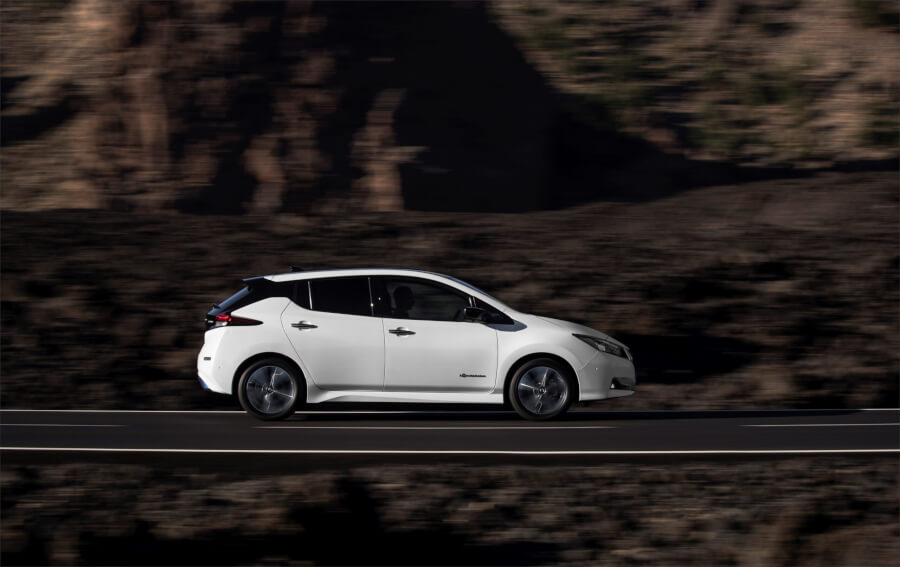<div data-url="https://uzladets.lv/?p=7429" data-title="
6 Interesting Facts About The Nissan LEAF
In 2020, it will be ten years since the Japanese manufacturer introduced the Nissan LEAF to the world, one of the first all-consumer, zero-power, fully electric cars in the world. In addition, just on September 1, 500 thousand Nissan electric cars left for a user in Norway, so it is worth looking at at least six interesting facts about this iron rum.
Currently, Nissan’s latest achievement in the field of electromobility is ARIYA. Although this model is completely different from the LEAF, they have one thing in common, namely the spirit and courage of Nissan’s newcomer to completely change the category. It could be said that if there had never been a LEAF, then now we would not be talking about the technologically superior ARIYA.
“Nissan” dealer in Latvia, car salon “Norde” owner, Dainis Bremze
Bremze adds that with ARIYA, a new Nissan logo has been introduced to the world, which largely reflects how society has changed with technology. The manufacturer’s new logo symbolizes the combination of the physical world with Nissan’s digital heritage and its tradition of innovation.
# 1 One of the first electric cars created from scratch
Ten years ago, the LEAF was one of the few car models built entirely as an electric car. At that time, most car manufacturers “electrified” standard fuel cars.
At the beginning of the electric car era, it was a major innovation. Aerodynamics are important to any car, but in the case of electric cars, it becomes even more important because it determines how efficiently the battery power is used. That’s why Nissan engineers have designed a comfortable and compact city vehicle and aerodynamic efficiency in the LEAF design.
“Nissan” dealer in Latvia, car salon “Norde” owner, Dainis Bremze
According to the expert, the purpose of placing the heaviest part of the car – the battery – under the seats and the free space at the back of the legs is to lower the car’s center of gravity as much as possible to improve the car’s structural strength and driving stability.
It should be noted that it is the battery that has undergone one of the biggest changes in future LEAF improvements. Namely, from 24 kWh capacity reaching 62 kWh, increasing the distance performance from 177 km to 385 km.
# 2 Plastic bottles are reborn in car interiors
About 60% of the interior of the first generation Nissan LEAF is made of recycled materials. Most of these materials are plastic water bottles. No less important fact – at the end of the life cycle of iron rumac 99% of it can be recycled again – in plastic bottles or in new LEAF cars.
# 3 Headlights make the car even quieter
Ingenious Nissan engineers have found additional functionality for this exterior component. By giving the car’s headlights a winged shape, it was achieved that the wind is directed along the mirrors while driving, thus reducing the noise level in the car interior to a minimum.
The headlights are not the only Nissan engineering innovation. The later models also have a so-called “E-pedal”, which does not require the use of a brake pedal. Namely, when the accelerator pedal is released, the car brakes fast enough. In addition, all the energy stored in the brake is used by the electronics to charge the batteries. In this way, the LEAF in the city cycle is surprisingly economical – being able to drive up to 528 km without recharging.
# 4 The first electric car with worldwide sales records
In 2019, 400,000 Nissan LEAF models were sold, making it the first best-selling electric car that year. On September 1, a resident of the Norwegian capital Oslo became the lucky owner of the 500,000th Nissan LEAF. Even the Norwegian Minister of Transport took part in the ceremony.
We also see stable sales results in Latvia. According to the data of the Road Traffic Safety Directorate, from 2014 to the end of July this year, 122 Nissan LEAF models were registered in Latvia for the first time. In addition, 19 cars were registered in the first seven months of 2020, so we hope that this year, despite the challenges posed by Covid-19, we will maintain last year’s sales level, namely 24 electric cars.
“Nissan” dealer in Latvia, car salon “Norde” owner, Dainis Bremze
# 5 One of the most award winning electric cars
The first generation model has received several awards. These include the Green Car Vision 2010 Award presented by Green Car Magazine at the annual auto show in Washington, the European Car of the Year 2011, the World Car of the Year 2011 and the Japanese Car of the Year 2011-2012.
The # 6 Nissan LEAF battery not only drives cars but also gives energy to buildings
About three months after the launch of the first generation LEAF, the Northeast coast of Japan experienced a severe earthquake and tsunami. After the disaster, 4.8 million households were left without electricity. Nissan donated 66 LEAF vehicles to the rescue services. In March, it is still quite cold in this area, so the doctors of the evacuation center were the first to ask the car manufacturer whether the batteries of the vehicle can also be used in the “opposite” direction, ie to obtain electricity from them.
It was this experience that inspired Nissan to rush to develop a new battery technology – two-way charging. Namely, so that the Nissan LEAF battery can use energy not only for driving, but also for homes, buildings and wherever it is needed.
In 2020, Nissan received Japan’s Best Resilience Award in the business and industry category for developing and implementing this technology. Nissan was the only carmaker to be on this list.


/data/photo/2020/09/07/5f55f62714ef9.jpg)
